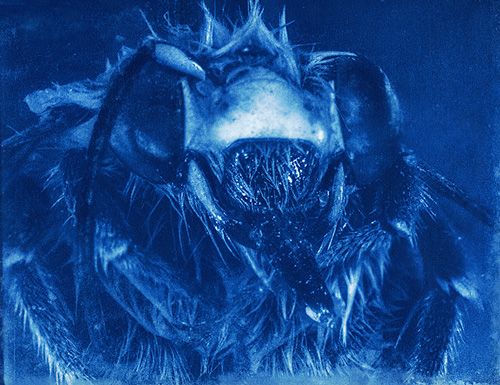Blakes Fly
Enrique Leal, Artist, UCSC Assistant Professor
Published in 1794, The Fly is English poet and painter William Blake’s reflection on our shared existence and eventual fate as it relates to a fly. It questions human exceptionalism by drawing attention to the outcomes of our inconsiderate actions towards other sentient beings, while wondering empathically in the second stanza of our mutual existence:
Am not I A fly like thee? Or art not thou A man like me?
Later in the poem, the “thoughtless hand” that “brushed away” the fly’s life becomes the “blind hand” that discount ours. In imagining how death arrives to the fly and the human, the poet reflects on what it means to both lives as they are experienced.
Throughout the last century, the genetic sequencing of the common fruitfly, Drosophila Melanogaster, has significantly advanced our knowledge of human gene activity implicated in the development of terminal diseases. Understanding what prompts or hinders D. Melanogaster cell division give biologists a better understanding how human metabolic and immune-system disorders progress. Our spiraled intimacy with various species of Diptera carries on after we cease to exist. As soon as death occurs, volatile chemicals escaping our corpse attracts flies and help determine the time of death. Larval stages develop soon after to ensure our lifelong generative exchanges. Being human means recognizing a felt reciprocity that continuously circulates and converges in a more-than-human world.

